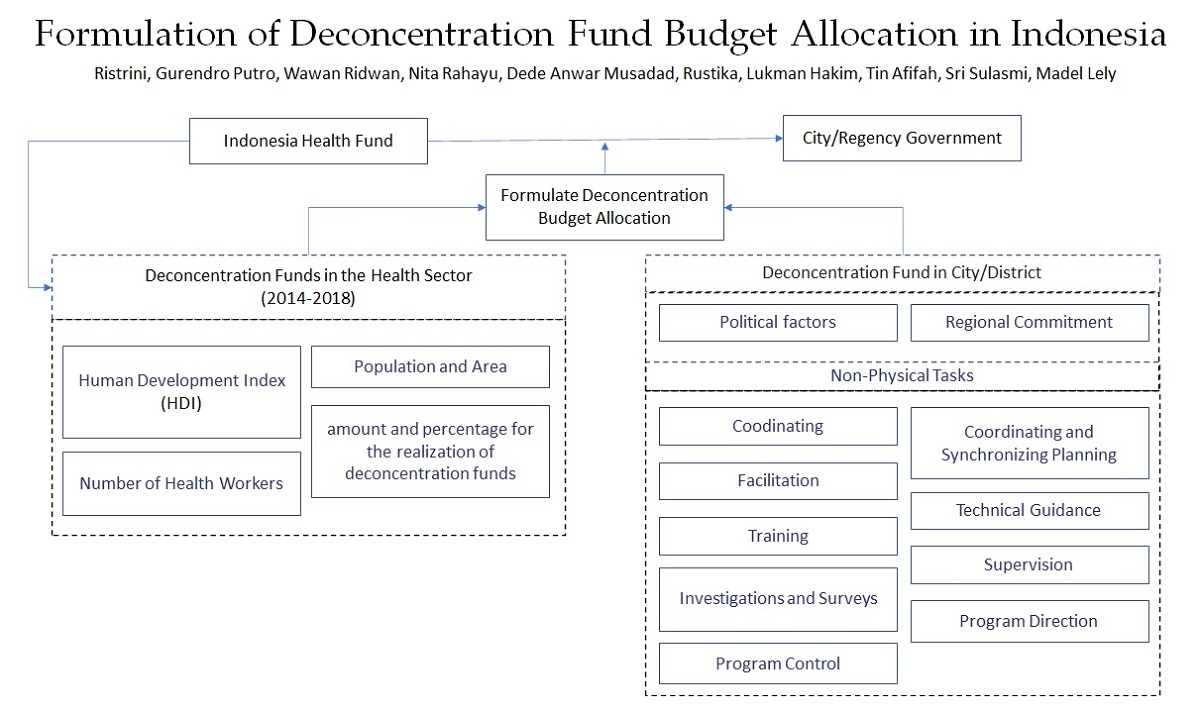The allocation for the use of Deconcentration Funds focuses on the seven priority health programs listed in the Regulation of the Minister of Health for the Republic of Indonesia. Therefore, this study aims to formulate a budget allocation for deconcentration funds in the health sector. Secondary data were analyzed using reports from the Ministry of Health for five years (2014-2018) on the Human Development Index (HDI), population, area, number of health workers, as well as amount and percentage for the realization of deconcentration funds. The results showed that the variables which had a significant effect were the number of districts/cities, the area, and HDI, while those without a significant effect were population, the number of health workers, and the percentage of budget realization. Political factors and regional commitment to implementing as well as using the budget were shown to also affect the deconcentration of funds both from the central and regional sources. Generally, deconcentration funds are used for non-physical tasks, including coordinating and synchronizing planning, facilitation, technical guidance, training, outreach, supervision, investigations and surveys, direction, and control. Based on the results, the budget allocation for deconcentration funds for health development needs to be calculated according to regional capacities by considering the number of districts/cities, land area, and the HDI.

